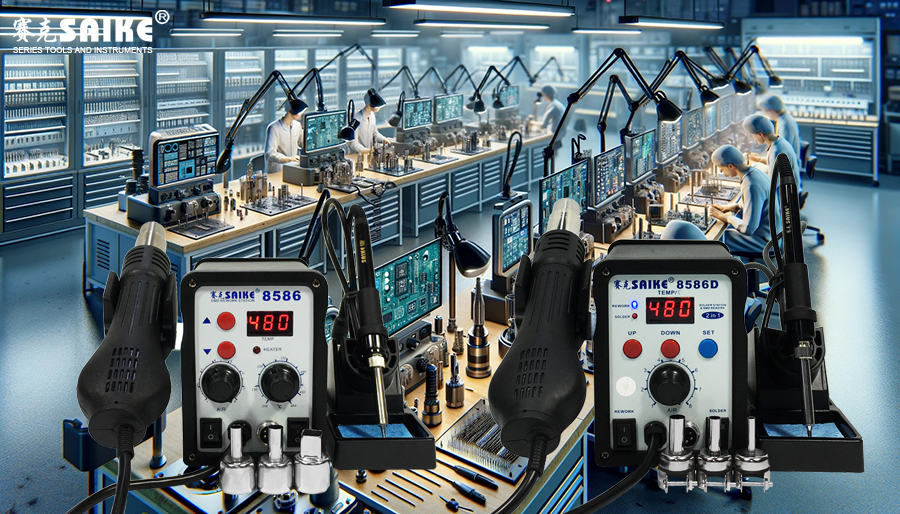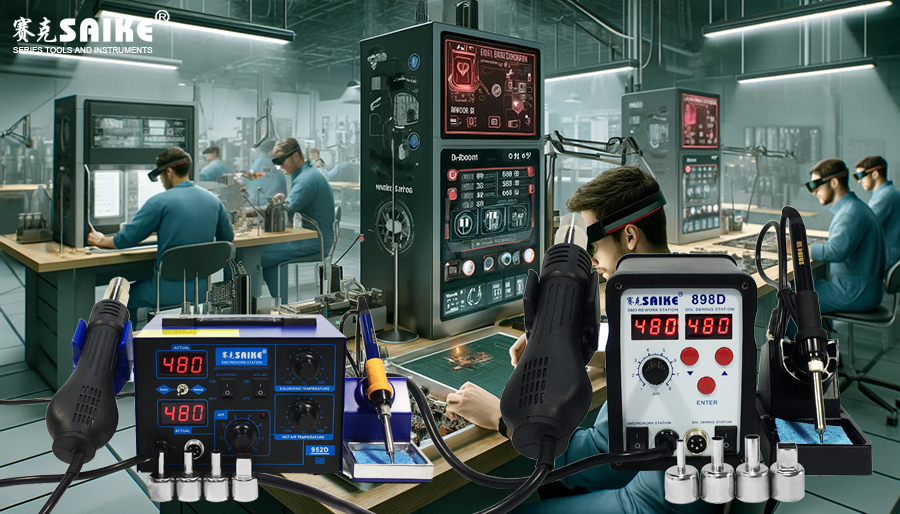
SK-YJ000RFCHT-KP 100007
Hot air rework stations play a crucial role in the electronic manufacturing and repair industry, and their efficiency and precision largely depend on the type and application of the nozzle. The nozzle is one of the key components of a hot air rework station, as it directly determines the directionality and coverage of the hot air. This article will introduce different types of nozzles and their suitable application scenarios.
I. Standard Circular Nozzle
Features:
– Simple circular shape, providing uniform hot air coverage.
– Typically used for general soldering and desoldering tasks.
Application Scenarios:
– Suitable for desoldering most standard SMD components, such as resistors, capacitors, and small integrated circuits.
– Particularly suitable for beginners and operators facing a variety of general soldering tasks.
II. Single-Hole Precision Nozzle
Features:
– The nozzle opening is small, providing very precise hot air direction.
– Suitable for delicate work requiring highly precise control.
Application Scenarios:
– Used for soldering or desoldering extremely small surface mount devices (SMD) components, such as crystal oscillators, microchips, etc.
– Working on high-density packaged circuit boards to avoid heating adjacent components.
III. Wide-Mouth Nozzle
Features:
– The nozzle opening is wide, covering a larger area.
– Suitable for uniform heating of large areas, accelerating the desoldering process.
Application Scenarios:
– Handling large integrated circuits, BGA chips, and large circuit board areas.
– Used when fast heating of multiple solder joints or large solder pads is required.
IV. BGA Nozzle
Features:
– Designed specifically for BGA chips, with a shape adapted to the BGA package.
– Can concentrate heat under the chip to provide uniform heating.
Application Scenarios:
– Dedicated to the desoldering of BGA chips, very suitable for complex equipment such as computer motherboards and game console motherboards.
– Ensures that the BGA chip is uniformly heated during the desoldering process, avoiding damage caused by uneven heating.
V. QFP Nozzle
Features:
– Designed in a long strip shape specifically for QFP (Quad Flat Package) type chips.
– Able to cover all the legs of the QFP chip to ensure uniform heating.
Application Scenarios:
– Suitable for desoldering QFP packaged chips, which are commonly used in advanced communication devices and computing equipment.
– Provides the necessary uniform heat flow during precision electronic equipment maintenance.
VI. Summary
In summary, choosing the right type of nozzle is crucial for efficient and safe soldering and desoldering tasks. Understanding the characteristics and application scenarios of each nozzle can help operators choose the most suitable tool for specific maintenance or manufacturing tasks. An appropriate nozzle not only improves work efficiency but also protects electronic components from unnecessary thermal damage. When purchasing or upgrading a hot air rework station, it is important to consider the type of components to be processed and the required precision to ensure the most suitable nozzle configuration is selected.


